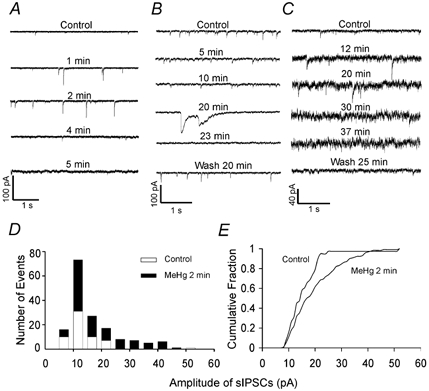Figure 3. MeHg causes a similar biphasic effect on frequency and amplitude of sIPSCs of cerebellar granule cells.

sIPSCs were recorded from granule cells in three sagittal cerebellar slices, following continuous perfusion with MeHg at 100 (A), 20 (B) and 10 μM (C). The holding potential was −60 mV, and all recordings were made in the presence of 10 μM CNQX and 50 μM APV in the external solution. A-C, time courses and reversibility of effects of MeHg on sIPSCs of granule cells. Data were collected in the absence (control) and presence of 100 (A), 20 (B) and 10 μM MeHg (C) at different time points. Note, in B and C, after sIPSCs were blocked completely, washing slices with 1 mM D-penicillamine for 20–25 min caused recovery of the sIPSCs. Also shown particularly well in panel C is the recovery of the background electrical ‘noise’ to its pretreatment level following wash with D-penicillamine. Each trace is a representative depiction of 4–8 individual experiments. D, histogram of amplitude distribution of sIPSCs recorded from a cerebellar granule cell before (control, white bar) and after exposure to 100 μM MeHg for 2 min (black bar). E, cumulative amplitude distribution of sIPSCs from the same granule cell as in D prior to (109 events), and at 2 min after starting perfusion with 100 μM MeHg (181 events). MeHg significantly shifted the cumulative amplitude distribution curve to the right after exposure for 2 min (P < 0.05, Kolmogorov-Smirnov test).
